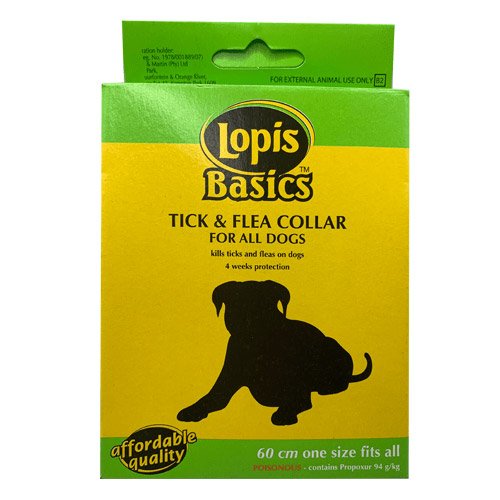Are fleas bad this year? You’re not the only one wondering if your furry friends are in danger in 2024.
Pet owners across the U.S. face a surge in flea and tick infestations, causing itchy discomfort for their furry friends.
Flea populations thrive in humidity levels between 50% and 90%, with temperatures of 70°F or higher. These conditions have created a perfect storm for flea activity in many regions.
This guide will equip you with strategies to protect your pets from these pesky parasites. Let’s get started.
Top Flea Treatments for Pets
Examining the Rise of Flea and Tick Populations

Fleas and ticks are booming in 2024. Why? In short, it’s because climate change and urban sprawl have created perfect conditions for these pests to thrive.
The Causes Behind the Increased Numbers
Climate change has dramatically impacted flea and tick populations. Warmer temperatures and increased humidity create ideal breeding conditions for these parasites.
In 2023, the UK experienced its hottest June in over a century, followed by an unusually wet July – a perfect storm for flea proliferation.
This weather pattern extended the active season for fleas and ticks, allowing them to reproduce more rapidly.
Human activity also contributes to rising flea and tick numbers. Increased outdoor recreation and pet ownership expose more potential hosts to these pests.
Urban sprawl encroaches on wildlife habitats, bringing humans and pets into closer contact with flea-carrying animals.
The 47% surge in flea infestations observed in 2023 stems from this combination of environmental factors and human behavior changes.
As a pet owner, you must remain vigilant and implement preventative measures to protect your furry companions from these blood-sucking parasites.
Like we share in our dog camping checklist, being aware of this problem and knowing what products help your dogs and cats stay parasite-free is one of the most important steps to take as a pet owner.
Need some help finding the best products to keep your dogs and cats tick and flea-free? Take a look at our tests of the top fleas and ticks collars for dogs!
Expected Trends of Flea and Tick Populations in 2024

Flea and tick populations are set to surge in 2024. Once again, climate change and urbanization create ideal breeding conditions for these pests.
Warmer winters allow more fleas and ticks to survive, leading to larger spring populations.
The flea and tick products market reflects this trend. It’s projected to hit $9,424.4 million by 2028, growing at 7.4% annually.
Major players like Merck Animal Health and Bayer AG are developing new solutions.
Digital tools for pest tracking and automated treatment systems have started to emerge and are expected to bring significant changes in the wat we monitor and fight ticks and fleas.
At the same time, also sustainable, eco-friendly products have started to gain traction among pet owners.
Regional Analysis of Flea and Tick Infestations

Flea and tick hotspots vary across the U.S. Different regions face unique challenges based on climate and geography.
Main Areas and Peaks for Flea and Tick Activity in the USA
- Northeastern Region: June to August.
- Southeastern Region: March to December.
- Northwestern Region: March to October.
- Southwestern Region: May to September.
- Midwestern Region: Late April to early October.
The Southeast and Gulf Coast often see year-round activity, while Northern states experience seasonal peaks.
Main Areas and Peaks for Flea and Tick Activity in the USA
Flea and tick activity peaks vary across U.S. regions.
Northeastern states see highest infestations from June to August, while the Southeast faces a longer season from March to December.
Northwestern areas experience peak activity March through October, and Southwestern regions from May to September.
Midwestern states typically deal with these pests from late April to early October.
Know your region’s peak season to protect your pets effectively.
Humidity levels between 50% and 90%, coupled with temperatures above 70°F, create ideal conditions for fleas and ticks to thrive.
These factors contribute to regional differences in pest activity, making year-round prevention crucial for pet owners nationwide.
Regular grooming and pest control measures help keep your furry friends comfortable and healthy throughout every season.
Effective Strategies for Flea and Tick Prevention and Treatment

In 2024, vets recommend a multi-pronged approach to flea and tick control: regular use of preventatives, frequent grooming, and yard maintenance.
In this final section of the article, let me share some vet-approved tips about the most effective strategies for keeping your furry friends pest-free this year.
Top Treatments and Prevention Techniques for This Year
Effective flea and tick prevention is crucial for pet health. Here are the top treatments and techniques to keep your furry friends protected:
- Regular preventative treatments: Apply flea treatment monthly to dogs and cats. Products like the Selehold for dogs or Advantage Multi for cats kill adult fleas within 24 hours and prevents future infestations.
- Home environment control: Use Vet’s Best Flea and Tick home spray to treat carpets, furniture, and pet bedding. This spray eliminates fleas at all life stages, including eggs and larvae.
- Thorough cleaning routine: Vacuum floors and upholstery frequently, washing pet bedding at 60°C to kill fleas and eggs. Empty vacuum contents outside to prevent reinfestation.
- Grooming practices: Brush pets regularly with a flea comb to detect and remove fleas. Bathe pets with a flea-specific product like the super-effective Adams Plus Flea & Tick Shampoo for added protection.
- Year-round protection: Vets recommend continuous flea treatment, even in cooler months. Fleas can survive indoors, making year-round prevention essential.
- Natural remedies: Apply food-grade diatomaceous earth to dry areas where pets frequent. This natural substance dehydrates and kills fleas.
- Lawn maintenance: Keep grass short and remove debris from your yard. This reduces flea-friendly habitats and limits outdoor infestations.
- Pet diet improvements: Feed pets a balanced diet rich in omega-3 fatty acids. Healthy pets are less attractive to fleas and better equipped to fight off infestations.
- Professional treatments: Consider hiring pest control experts for severe infestations. They can apply targeted treatments to eliminate fleas throughout your property.
- Flea-repelling plants: Grow mint, lavender, or chrysanthemums in your garden. These plants naturally repel fleas and other pests.
These strategies will help safeguard your pets and home from flea and tick infestations.


















